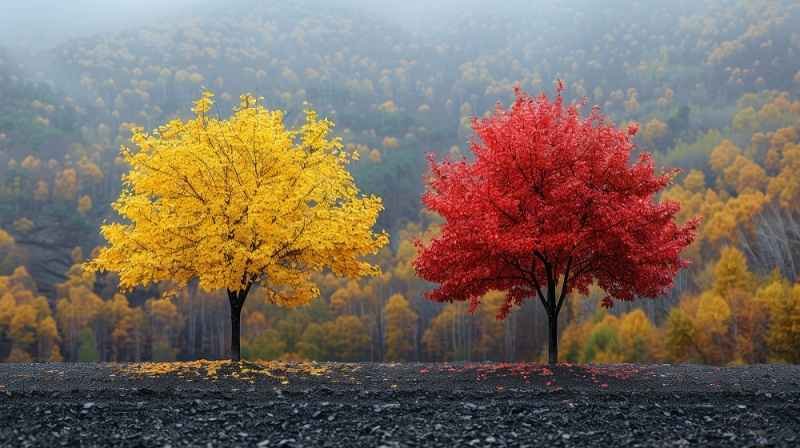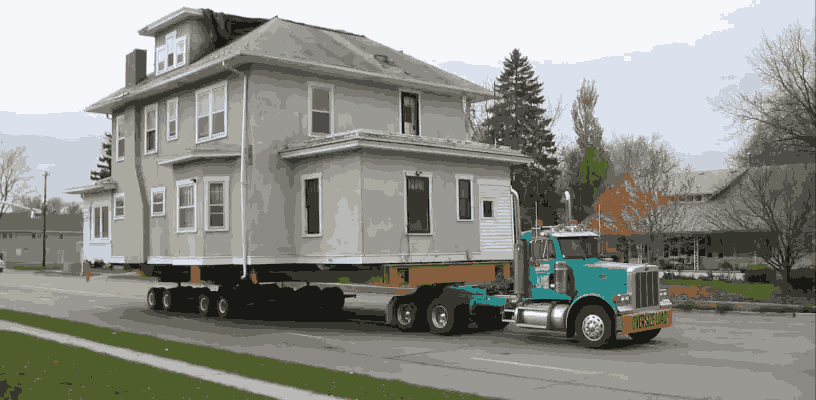As the seasons shift and the crisp air of autumn arrives, nature transforms into a breathtaking display of colors. Fall trees, with their vibrant hues of red, orange, yellow, and gold, become the centerpiece of this seasonal change. Whether you’re planning to plant trees in your yard or exploring local parks to admire their beauty, understanding fall trees can help you appreciate and incorporate these natural wonders into your life. In this guide, we’ll highlight the best fall trees, their characteristics, and tips for enjoying their beauty in your landscape.
1. Why Do Trees Change Color in the Fall?
The stunning transformation of fall foliage is a natural process caused by changes in the environment. As daylight hours shorten and temperatures drop, trees prepare for winter by reducing the production of chlorophyll—the pigment responsible for their green color. As chlorophyll fades, other pigments in the leaves become visible, creating the vibrant yellows, oranges, reds, and purples we associate with autumn.
Key Pigments Behind Fall Colors:
- Carotenoids: Responsible for yellow and orange hues.
- Anthocyanins: Create red and purple tones, often most vivid in cooler climates.
- Tannins: Give leaves their earthy brown shades.
2. The Best Fall Trees for Stunning Foliage
If you’re looking to add a burst of autumn color to your landscape or simply want to know which trees to seek out for fall viewing, here are some of the most popular and visually striking fall trees:
1. Sugar Maple (Acer saccharum)
- Fall Color: Brilliant shades of orange, red, and yellow.
- Why It Stands Out: Sugar maples are iconic for their vibrant, multicolored leaves and are often found in picturesque autumn landscapes.
- Growing Tips: Prefers well-drained soil and full sun to partial shade.
2. Red Maple (Acer rubrum)
- Fall Color: Fiery red with occasional yellow or orange highlights.
- Why It Stands Out: Known for its consistent and bold red foliage, this tree is a favorite for fall displays.
- Growing Tips: Thrives in a variety of soil types and is highly adaptable to different climates.
3. Japanese Maple (Acer palmatum)
- Fall Color: Deep crimson, burgundy, and sometimes golden tones.
- Why It Stands Out: Its delicate, lacy leaves and small size make it a perfect ornamental tree for gardens.
- Growing Tips: Prefers well-drained soil and partial shade for optimal color.
4. Ginkgo (Ginkgo biloba)
- Fall Color: Vibrant, golden yellow.
- Why It Stands Out: This ancient tree’s fan-shaped leaves create a unique and stunning golden carpet when they fall.
- Growing Tips: Prefers sunny locations and is highly resistant to pests and diseases.
5. Aspen (Populus tremuloides)
- Fall Color: Bright yellow, often shimmering in the sunlight.
- Why It Stands Out: Aspens grow in clusters and create breathtaking displays in mountainous regions, especially in the western United States.
- Growing Tips: Thrives in cooler climates and higher altitudes.
6. Dogwood (Cornus florida)
- Fall Color: Reddish-purple leaves with clusters of bright red berries.
- Why It Stands Out: In addition to its colorful leaves, the berries attract birds, adding life to your fall garden.
- Growing Tips: Prefers moist, well-drained soil and partial shade.
7. Oak Trees (Quercus spp.)
- Fall Color: Deep red, brown, or russet tones.
- Why They Stand Out: Oak trees bring a stately, classic beauty to fall landscapes, with their large, textured leaves and strong presence.
- Growing Tips: Require ample space to grow and thrive in a variety of soil types.
3. How to Incorporate Fall Trees into Your Landscape
Adding fall trees to your yard or garden can create a stunning seasonal display and increase the value of your property. Here are some tips for incorporating them into your landscape:
- Choose a Variety of Trees: Mix trees with different fall colors to create a diverse and vibrant display. For example, pair yellow-leafed ginkgos with red maples and orange sugar maples.
- Plant in Focal Points: Place fall trees in prominent areas, such as near driveways, walkways, or backyard seating areas, to maximize their visual impact.
- Consider Tree Size: Ensure the trees you choose fit the scale of your yard. Smaller trees like Japanese maples are ideal for compact spaces, while larger trees like oaks and sugar maples work well in open areas.
- Think About Year-Round Interest: Select trees that offer beauty throughout the year. Many fall trees, like dogwoods and oaks, also have attractive spring flowers or interesting bark.
4. Best Places to See Fall Trees in Full Glory
If you’re looking to experience the majesty of fall trees in their natural settings, there are countless destinations known for their autumn displays. Here are a few must-visit locations:
- New England, USA: States like Vermont, New Hampshire, and Maine are famous for their sugar maples and breathtaking fall foliage.
- Great Smoky Mountains, USA: This region offers a mix of vibrant fall colors, with red maples, oaks, and dogwoods putting on a spectacular show.
- Japanese Gardens: Japanese maples are often the highlight of autumn in traditional Japanese gardens, offering serene and picturesque views.
- Rocky Mountains, USA: The golden aspens in Colorado and surrounding states create a stunning contrast against the rugged mountain backdrop.
5. Caring for Fall Trees
To keep your fall trees healthy and vibrant, follow these care tips:
- Water Regularly: Even in the fall, ensure your trees are well-watered, especially during dry spells.
- Mulch Properly: Add a layer of mulch around the base of the tree to retain moisture and protect roots from fluctuating temperatures.
- Prune as Needed: Prune dead or damaged branches in late winter or early spring to encourage healthy growth.
- Fertilize Wisely: Use a balanced fertilizer in the spring to support tree health, but avoid over-fertilizing in the fall as it can delay dormancy.
6. The Importance of Fall Trees to the Ecosystem
Fall trees are more than just visually stunning—they also play a vital role in the ecosystem. Their falling leaves decompose and enrich the soil, providing nutrients for future plant growth. Additionally, many trees, like dogwoods and oaks, produce berries or acorns that serve as food for birds and wildlife during the colder months.
Conclusion
Fall trees are one of nature’s greatest spectacles, transforming landscapes with their vibrant colors and unique textures. Whether you’re admiring their beauty in the wild or incorporating them into your own yard, these trees bring warmth, energy, and seasonal charm to any setting. With the right care and thoughtful placement, fall trees can provide years of breathtaking autumn displays while enhancing the natural beauty of your surroundings.
Celebrate the season by exploring the incredible variety of fall trees and embracing their vibrant charm in your landscape or outdoor adventures.
For more information, visit our website Homethreads







